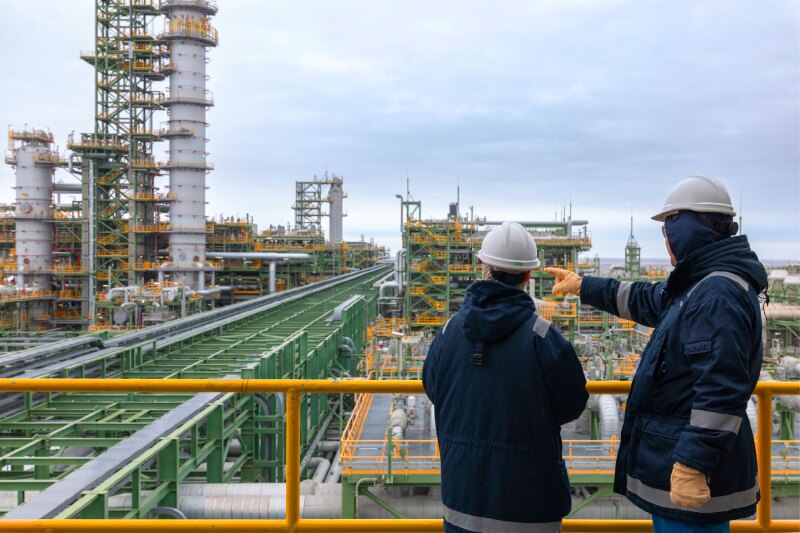First oil from Chevron’s $47 billion production upgrade to Kazakhstan’s Tengizchevroil (TCO) venture is flowing after the startup of TCO’s Future Growth Project (FGP)—the last phase of an expansion to keep Tengiz, the world’s deepest producing supergiant oil field, on stream for the next generation.
Tengiz is Central Asia’s largest oil producer, featuring the largest single-trap producing reservoir in existence and an oil column measuring 1 mile (1.6 km).
Chevron operates Tengiz through its 50% interest in the TCO joint venture; partners include Kazakhstan’s NOC, KazMunayGas (20%); ExxonMobil (25%); and LukArco, a subsidiary of Russia’s Lukoil (5%).
With the FGP’s commissioning on 24 January, Chevron dropped into place the final element of a two-phase expansion plan on which it had taken a final investment decision in 2016, expecting to finish the project in 2022. However, the COVID-19 pandemic, along with logistical and regulatory challenges, hindered progress.
Production Rates to Ramp Up Quickly
Chevron CEO Michael Wirth told analysts at the company’s 4Q earnings call on 31 January that TCO “expects to achieve full production rates of 1 million BOE/D within the next 3 months” based on the additional 260,000 bbl of expanded oil production capacity that the FGP adds to existing plants.
In April, Chevron commissioned Phase 1 of the two-step expansion, the Wellhead Pressure Management Project (WPMP), which is designed to optimize the field and processing plants.
Upgraded sour gas-injection technologies to enhance oil recovery lie at the heart of the FGP expansion along with the just commissioned 12-mtpa-capacity, third-generation processing plant, the third and last processing facility included in the expansion plan.
Digital innovations have been integrated into the project including automated process controls, digital twin, real-time data visualization, wireless safety sensors, and electronic work permit systems.
SPE 223452, authored by Tengizchevroil and presented at the 2024 SPE Caspian Technical Conference and Exhibition, spotlighted cutting-edge geographic information system SimOps maps as playing a critical role in optimizing project management.
Latest Upgrades Across the Board
The FGP and WPMP are separate but complementary projects aimed at extending TCO’s production plateau and keeping existing plants producing at full capacity.
Taken together they represent installed power systems with five Frame 9 gas turbine generators, four large new compression trains with additional pumping capacity, a new centralized control center and enhanced sour-gas handling and reinjection to the field for long-term pressure maintenance, according to TCO.
The project’s sour-gas-injection technology was already proven during TCO’s 2008 expansion, and the WPMP maintains plant capacity by lowering the flow pressure at the wellhead and then boosting the pressure to the inlet requirements of the processing trains.
Details on the implementation of both of these key technologies used in the TCO upgrade are found in SPE 223475 which documents experience in resolving well startup challenges in TCO’s high-pressure gathering system before conversion to low pressure, and SPE 203995 highlighting sour-gas injection.
With the 40-year Tengiz concession due to end in 2033, the investment community is already asking when and if Chevron and its TCO partners might open negotiations. “As we get through the ramp-up to see the plant and reservoir performance, we'll then be able to really turn our focus to the future,” Wirth said after analysts raised the question at the 4Q earnings call.
“We've got a long proud history in Kazakhstan and with the TCO partnership, and we certainly would like to extend the concession, but it has to work for everyone,” Wirth said.
While the FGP primarily targets increased production at Tengiz, its broader operational scope within TCO also covers the Korolev field. Combined, Tengiz and Korolev hold estimated recoverable crude oil reserves of approximately 7.5 billion bbl and 469 Bcm (approximately 16.6 Tcf) of gas, representing 12% of Kazakhstan’s recoverable gas reserves, according to Chevron’s Kazakh partner KazMunayGas.


